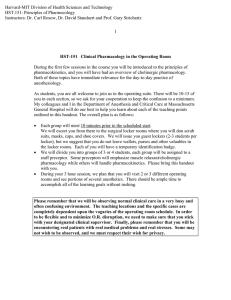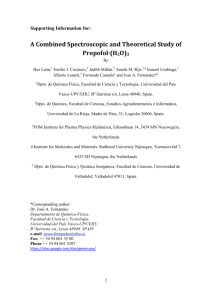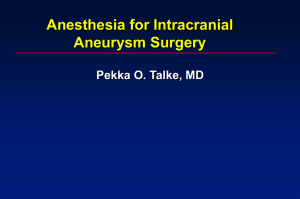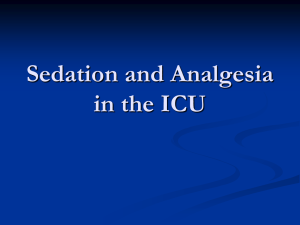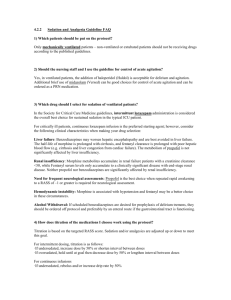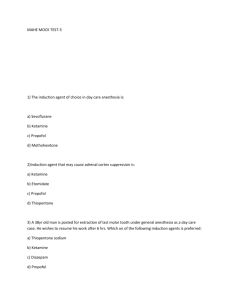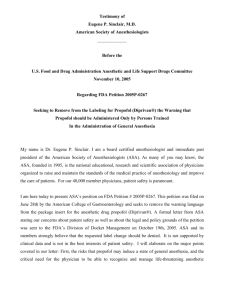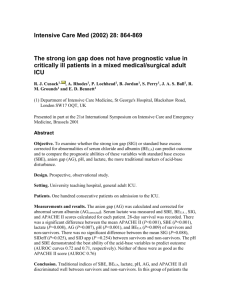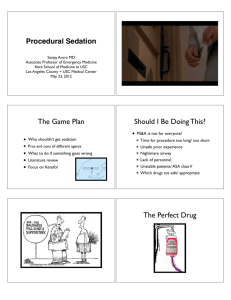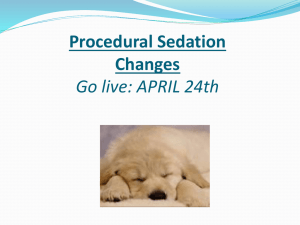Anesthesia Protocol for Endoscopic Sinus Surgery at UWMC
advertisement
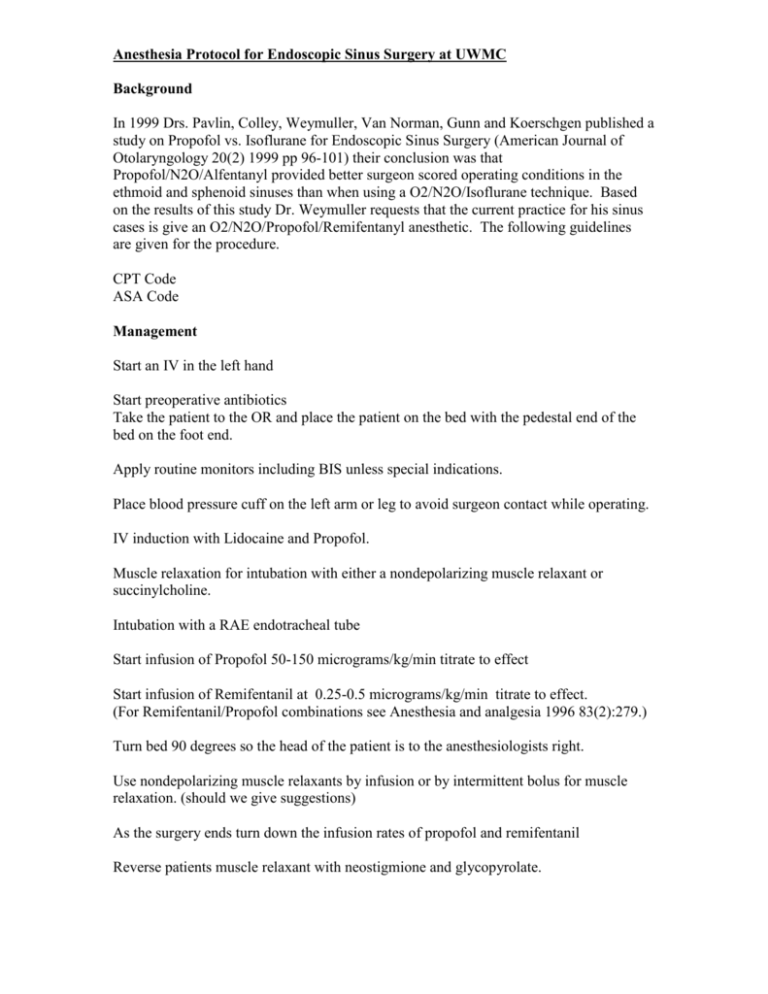
Anesthesia Protocol for Endoscopic Sinus Surgery at UWMC Background In 1999 Drs. Pavlin, Colley, Weymuller, Van Norman, Gunn and Koerschgen published a study on Propofol vs. Isoflurane for Endoscopic Sinus Surgery (American Journal of Otolaryngology 20(2) 1999 pp 96-101) their conclusion was that Propofol/N2O/Alfentanyl provided better surgeon scored operating conditions in the ethmoid and sphenoid sinuses than when using a O2/N2O/Isoflurane technique. Based on the results of this study Dr. Weymuller requests that the current practice for his sinus cases is give an O2/N2O/Propofol/Remifentanyl anesthetic. The following guidelines are given for the procedure. CPT Code ASA Code Management Start an IV in the left hand Start preoperative antibiotics Take the patient to the OR and place the patient on the bed with the pedestal end of the bed on the foot end. Apply routine monitors including BIS unless special indications. Place blood pressure cuff on the left arm or leg to avoid surgeon contact while operating. IV induction with Lidocaine and Propofol. Muscle relaxation for intubation with either a nondepolarizing muscle relaxant or succinylcholine. Intubation with a RAE endotracheal tube Start infusion of Propofol 50-150 micrograms/kg/min titrate to effect Start infusion of Remifentanil at 0.25-0.5 micrograms/kg/min titrate to effect. (For Remifentanil/Propofol combinations see Anesthesia and analgesia 1996 83(2):279.) Turn bed 90 degrees so the head of the patient is to the anesthesiologists right. Use nondepolarizing muscle relaxants by infusion or by intermittent bolus for muscle relaxation. (should we give suggestions) As the surgery ends turn down the infusion rates of propofol and remifentanil Reverse patients muscle relaxant with neostigmione and glycopyrolate.
